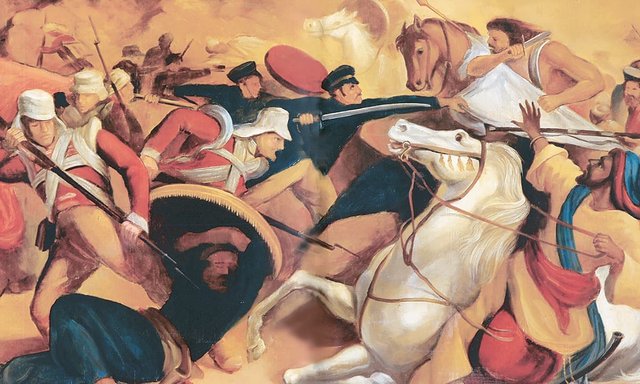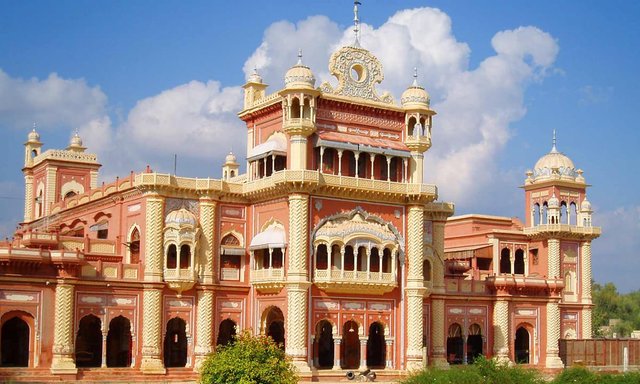
How to counter colonial myths about Muslim arrival in Sindh
Dry leaves from young Egypt, Volume I
It is a fact not so easily known, thus rarely acknowledged, that the British colonial project in India at one moment turned into an excavation of India’s pasts. This excavation was aimed at exploring the arrival of various ‘foreign’ people, cultures, religions and politics into the Subcontinent. After all, the Indian peninsula had been the site of commercial, political and military incursions by the Portuguese, the Dutch and the Timurids since 1498. Surely, one reason for the excavation was that, as the latest foreigners to arrive in India, the British wanted a justification for their own arrival. The other reason is tied to the way in which the British saw themselves as heirs to the Romans.Edward Gibbon published the first volume of his book The History of the Decline and Fall of the Roman Empire in 1776, the year Great Britain lost 13 of its colonies in America. All six volumes of the book came out by 1788 to tremendous acclaim and sales. A central theme in Gibbon’s work was his quest for historical linkages between Pax Britannica – the period of British-dominated world order – and Pax Romana.He provided the foundational stone for a theory that sought to legitimise British colonial enterprise as a successor to a great empire of the past that brought a long era of peace and prosperity for Europe in its wake. Even more influential, I would argue, is his exploration of the relationship between race and politics within the context of the Roman experience. This relationship was immediately employed in legitimising the British conquest of India.The British formally began their imperial project in India in 1757 after the Battle of Plassey. In 1783, William Jones arrived as a sessions judge at Fort William in Calcutta. Over the next decade, he founded the new science of philology that combined linguistics with human migration patterns and mingling of races across the Indo-European region. He linked ancient languages and prehistoric migrations to the long history of foreign arrivals into India, a process that would culminate in the advent of the British presence in the Subcontinent. He came up with a story that linked Greek, Latin and Sanskrit languages via a “common source” that “no longer existed”. This “common source” was “conquerors from other kingdoms in some very remote age”.By the early 19th century, a new generation of British officers became scholars of India’s pasts. They imagined themselves as latter-day Alexander the Greats, amassing accounts of geographies, peoples and objects that connected India to the Greeks, and by extension to the Romans, of the past. Alexander Burnes, James Tod, Richard F Burton and Edward B Eastwick were most prominent among them.They travelled between Kabul and Bombay and collected manuscripts, coins and copper utensils in order to establish how India came under Greek influence through Alexander the Great’s conquest of the northwestern parts of the Subcontinent. Their research focused on Greek and Roman trade with India, Alexander’s conquest and the remnants of his armies that stayed back in the areas he had passed through.
Faiz Mahal, built by the Talpur rulers of Khairpur in Sindh | Wikimedia Commons
They also looked into migrations from the Central Asian Steppe into the Subcontinent and the relationship of all these developments to the evolution of languages, cities, religions and polities. The journals of the royal Asiatic societies of Bengal and Bombay published their findings on the presence of the Arya, the Indo-Parthians, the Indo-Bactrians and the “White Huns” in the Indian subcontinent — communities that had hints of a common Eurasian ancestry.By the middle of the 19th century, a new generation of British historians took up the project of collating this ‘raw’ data into historical treatises. H M Elliot and M Elphinstone were the forerunners in this generation. They were followed by Vincent Smith, Stanley Lane-Poole, Alexander Cunningham and R B Whitehead, among others. As the British colonial project expanded geographically – from Calcutta to Delhi, from Madras to Bombay and from Lahore to Peshawar – it delved deeper and deeper in time as far as excavation of India’s pasts was concerned.The roots of the Sanskrit language, the genealogy of the Aryan race, the origins of the Subcontinent’s indigenous “tribes” and the etymology of names of places show up regularly in the huge reams of colonial speeches, journal articles, travelogues, district reports, histories and commentaries of that era. Nestled in the middle of this project – and first highlighted in the middle of the 19th century – is the question of Muslim arrival in India.The East India Company defeated the Talpur Mirs in 1843 at Miani and conquered the princely state of Sindh. The conquest was cast as a corrective to the Muslim conquest of India — a move to emancipate the Hindus from the clutches of foreign Muslim rule going as far back as the early eighth century. Centred on the delta of the Indus river opening into the Arabian Sea, Sindh comprised a series of ports and large tracts of dry, desert-like terrain.The state was a borderland for the East India Company at the beginning of the 19th century, though in contemporary maps it is surrounded by other parts of the Subcontinent such as Gujarat, Rajasthan, Punjab and Balochistan. Indus, uncharted by the company till then, offered an upstream link from Bombay to Lahore, the capital of Ranjit Singh’s Sikh kingdom. Through the deserts of Thar and Balochistan, Sindh linked India to the Durrani court in Kabul.The company envisioned it as a necessary buffer between its long-established Bombay Presidency and Afghanistan (as well as French and Russian interests in Central Asia and Iran). More importantly, its scholar-warriors had already discovered that it was in Sindh that Muhammad bin Qasim had defeated the polity founded by the “White Huns” – remnants of the Indo-Bactrians – in 712 and pushed the Hindus of India into a millennium of domination by the Muslims. This discovery was immediately put to political use.Edward Law Ellenborough, governor-general of the East India Company at the time, dramatically brought back the “gates of Somnath” temple from Kabul to show to the Hindus that his company was there to counter Muslim tyranny. In his declaration of 1842 to “all Princes and Chiefs and People of India”, he announced that the return of the spoiled remains of the temple to India avenged “the insult of 800 years ... the gates of the temple of Somnath, so long the memorial of your humiliation, are become the proudest record of your national glory”. Ellenborough’s political strategy was to cast the company as a rectifier of the historical harm the Muslims had inflicted on Hindus. It mattered little that the “gates” had little to do with Somnath.Charles Napier, a veteran military commander of imperial wars in Europe who was chosen by Ellenborough to conquer Sindh, was a deeply religious man. He had just arrived in India when he launched his campaign in Sindh.He was convinced that the company had become beholden to commerce and had shied away from its divine mission. He saw the ‘liberation’ of Sindh from its despotic Muslim rulers as his Christian duty. He called the Talpurs the “greatest ruffians” and “imbeciles” who possessed “zenanas filled with young girls torn from their friends” and treated the women in the harem “with revolting barbarity”. The Talpurs, he said, were even prone to enjoying occasional “human sacrifice”.

Hi! I am a robot. I just upvoted you! I found similar content that readers might be interested in:
https://herald.dawn.com/news/1153850
Downvoting a post can decrease pending rewards and make it less visible. Common reasons:
Submit
This post recieved an upvote from minnowpond. If you would like to recieve upvotes from minnowpond on all your posts, simply FOLLOW @minnowpond
Downvoting a post can decrease pending rewards and make it less visible. Common reasons:
Submit